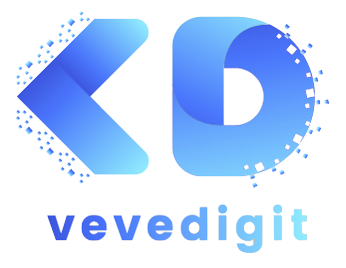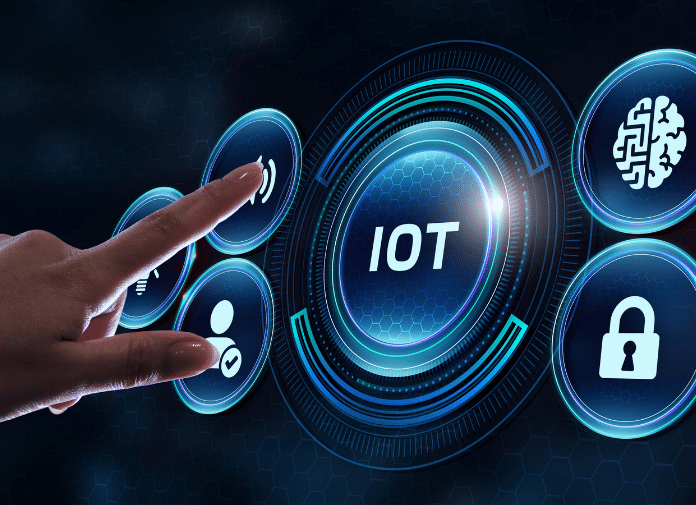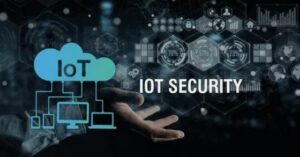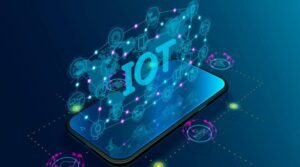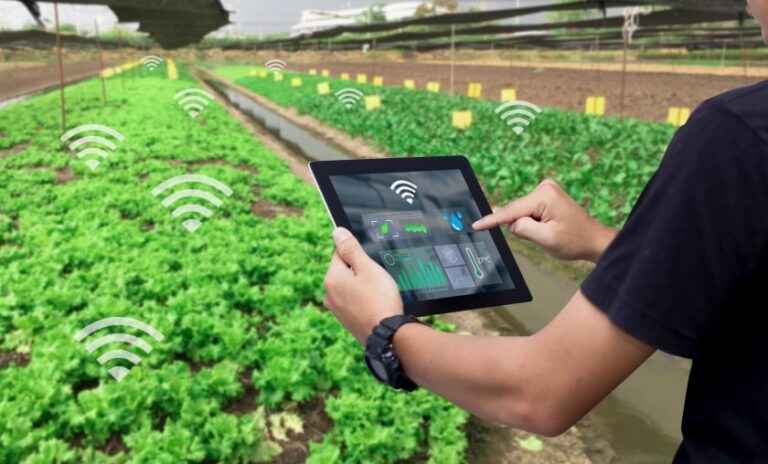The Rapid Growth of the IoT Industry
The Internet of Things (IoT) is no longer a futuristic concept; it is a transformative force shaping industries and everyday life. By 2030, the global IoT market is projected to surpass $1.5 trillion, fueled by advancements in connectivity, the proliferation of smart devices, and widespread adoption in various sectors.
IoT’s Impact Across Industries
- Healthcare: IoT-enabled devices such as remote patient monitors and wearable health trackers enhance patient care and reduce operational costs.
- Manufacturing: Industrial IoT solutions optimize production processes, enable predictive maintenance, and minimize downtime.
- Transportation: IoT systems improve fleet management, traffic monitoring, and vehicle performance.
- Smart Homes: Devices like smart thermostats, security cameras, and voice assistants offer unparalleled convenience and security.
By 2025, businesses globally are expected to spend over $1 trillion annually on IoT solutions, underlining the technology’s role in driving efficiency and innovation.
Investment and Innovation in IoT
The Internet of Things (IoT) is rapidly evolving into one of the most transformative technologies of our time, driven by constant investment and innovation. Startups and established enterprises are actively pursuing groundbreaking solutions to address industry challenges and leverage the growing potential of IoT applications. This competitive landscape has created a fertile ground for advancements that are shaping the future of connectivity and automation.
Emerging Technologies Driving IoT Growth
The growth of IoT is propelled by emerging technologies that enhance connectivity, data security, and operational efficiency.
Blockchain Integration in IoT
Blockchain technology is revolutionizing IoT ecosystems by addressing one of its biggest concerns—data security. By offering decentralized data storage and tamper-proof ledgers, blockchain ensures:
- Enhanced Data Integrity: All device interactions and transactions are securely logged.
- Improved Transparency: Stakeholders can access real-time, verifiable data records.
- Reduced Vulnerabilities: Blockchain reduces the risk of cyberattacks in highly connected networks, particularly in industries like healthcare and finance.
Blockchain’s ability to facilitate secure, autonomous communication between IoT devices has made it indispensable in industries requiring high levels of trust and transparency.
5G Networks: The IoT Catalyst
The rollout of 5G networks is redefining what’s possible in IoT by enabling:
- Real-Time Data Transfer: Applications such as remote surgeries, autonomous driving, and industrial automation require instantaneous data exchange, made possible by 5G.
- Massive Device Connectivity: 5G supports up to 1 million connected devices per square kilometer, making it ideal for smart cities and dense IoT ecosystems.
- Low Latency: Reduced lag improves the performance of time-sensitive applications like augmented reality (AR) and virtual reality (VR).
The combination of 5G and IoT is expected to unlock new opportunities across industries, from smarter supply chains to connected agriculture.
Advanced Cellular Modules for IoT Devices
Cellular modules, which serve as the communication backbone for IoT devices, are advancing rapidly. Key improvements include:
- Faster Speeds: Supporting higher data throughput for applications like video surveillance and advanced analytics.
- Increased Reliability: Ensuring seamless performance in critical sectors such as transportation and healthcare.
- Scalability: Modules now accommodate more devices without compromising efficiency, enabling larger IoT networks.
These advancements are critical for scaling IoT applications in areas like industrial automation, environmental monitoring, and public safety.
Funding and Venture Capital Trends
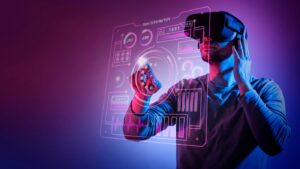
IoT’s explosive growth potential has attracted significant venture capital funding, fueling innovation and development. Startups and established enterprises alike are reaping the benefits of these investments:
Key Areas of Investment
- Advanced IoT Gateways: Investors are funding projects to develop intelligent gateways that ensure smooth communication between devices, edge servers, and cloud systems.
- Energy-Efficient Sensors: Compact and low-power sensors are gaining attention as they reduce energy consumption while delivering precise, real-time data.
- Edge Computing Platforms: Edge computing minimizes data processing delays by bringing computation closer to the devices, enhancing speed and reducing reliance on cloud services.
Read More Related: What Happens to the Data Gathered by IoT Sensors?
Industries Benefiting from Investment
- Smart Cities: Governments and private investors are allocating funds to IoT solutions for traffic management, waste disposal, and public safety.
- Healthcare: Wearable devices and remote monitoring systems are receiving a significant portion of IoT funding, helping address the growing demand for telemedicine.
- Agriculture: Smart irrigation systems, livestock tracking, and weather sensors are examples of IoT-powered solutions revolutionizing farming practices.
Rising Startup Ecosystem
Startups in IoT are thriving, driven by innovative ideas and growing demand. Venture capital firms are pouring billions into early-stage IoT startups working on solutions for smart homes, industrial automation, and connected vehicles. With the right funding, these startups are pushing boundaries and introducing breakthrough technologies that cater to both consumer and enterprise markets.
Partnerships and Collaborations
Collaborations between startups, enterprises, and research institutions are accelerating IoT advancements. For example:
- Tech giants like Amazon and Google are partnering with IoT startups to integrate AI and voice-assistant technologies into smart home devices.
- Cross-industry collaborations are paving the way for IoT applications in healthcare, renewable energy, and urban planning.
Regulatory and Ethical Considerations in IoT Investment
As IoT adoption accelerates, regulatory frameworks are evolving to address:
- Data Privacy: Governments are implementing stricter data privacy laws, such as GDPR in Europe, to ensure secure handling of user information.
- Interoperability Standards: To prevent fragmented ecosystems, regulatory bodies are advocating for universal IoT communication standards.
- Sustainability Goals: Investors are increasingly focused on IoT solutions that align with environmental sustainability, such as smart grids and energy-efficient technologies.
The Road Ahead for IoT Investment
The IoT landscape will continue to attract investment, with a focus on emerging technologies like artificial intelligence, edge computing, and blockchain. As global industries prioritize automation, efficiency, and sustainability, IoT will remain at the forefront of technological innovation.
By fostering a dynamic ecosystem of funding, innovation, and collaboration, IoT is set to redefine connectivity, enhance quality of life, and unlock new economic opportunities in the coming decade.
The Future of IoT Connectivity
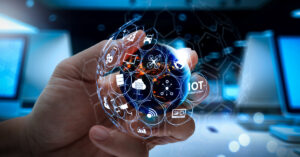
The Rise of Connected Devices
By 2030, the number of connected IoT devices is expected to exceed 50 billion, far outpacing non-IoT devices. This rapid growth reflects the rising demand for seamless connectivity across industries.
IoT and Sustainability
IoT technologies are being leveraged to achieve sustainability goals, particularly in reducing energy consumption and minimizing waste. Examples include:
- Smart grids that optimize electricity distribution.
- IoT sensors monitoring water usage and preventing leaks.
- IoT-enabled logistics systems reducing carbon emissions in supply chains.
Read More Related: IoT Sensors Demystified: What They Are and How They Drive Innovation
Transformative IoT Applications
Consumer Applications
- Smart Homes: IoT devices such as smart lights, speakers, and home security systems enhance convenience and safety.
- Wearable Devices: Fitness trackers and health monitors provide real-time data to improve personal well-being.
- Connected Cars: IoT in vehicles enables navigation assistance, fuel efficiency tracking, and autonomous driving capabilities.
Enterprise Applications
- Supply Chain Management: IoT streamlines inventory tracking, demand forecasting, and shipment monitoring.
- Predictive Maintenance: Sensors detect equipment issues before they escalate, reducing downtime and repair costs.
- Workplace Productivity: Smart office solutions enhance employee productivity through automation and resource management.
IoT Trends and Market Insights for 2024
The IoT market is witnessing exciting trends that promise to reshape industries:
- Real-Time Analytics and Machine Learning: Businesses are prioritizing actionable insights derived from IoT data to optimize operations and improve customer experiences.
- Energy Efficiency: IoT systems are helping companies meet environmental targets by reducing energy usage and emissions.
- Advanced Wireless Technologies: Multi-functional IoT gateways and enhanced wireless protocols enable more robust ecosystems.
IoT: Basics and Beyond
The Internet of Things (IoT) has become one of the most transformative technological advancements of the 21st century. It represents a vast network of interconnected devices, sensors, and systems that communicate and exchange data with minimal or no human intervention. These devices range from everyday household items like smart thermostats and fitness trackers to complex industrial systems used in factories and supply chains.
IoT is more than just a buzzword—it is a technological ecosystem that bridges the gap between the physical and digital worlds. This convergence is revolutionizing how we live, work, and interact with our surroundings by enabling automation, efficiency, and data-driven decision-making.
Understanding IoT: A Deeper Dive
At its core, IoT operates through a combination of hardware, software, and connectivity. Here’s how these elements work together:
- Hardware: Devices equipped with sensors and actuators that collect data or perform actions. Examples include smart home devices, wearable health monitors, and industrial machinery.
- Software: Platforms and algorithms that process the collected data, enabling insights and automated responses. This includes machine learning models that can predict outcomes or optimize processes.
- Connectivity: Communication protocols like Wi-Fi, Bluetooth, cellular networks, and 5G that allow devices to exchange information in real-time.
The primary goal of IoT is to create a seamless flow of information between devices, systems, and users, enhancing convenience, productivity, and innovation.
The Importance of IoT
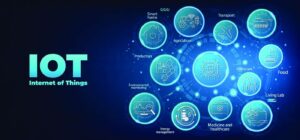
IoT’s significance lies in its ability to address real-world challenges across multiple sectors. Here’s why it matters:
1. Enhanced Automation and Efficiency
IoT devices eliminate manual tasks by automating processes. For instance, smart irrigation systems can water crops based on soil moisture levels, while industrial IoT sensors can monitor equipment performance and schedule maintenance before a breakdown occurs.
2. Real-Time Data Insights
IoT generates vast amounts of real-time data that can be analyzed to make informed decisions. For example, connected vehicles can provide traffic updates to avoid congestion, while wearable health devices can track vital signs and alert users to potential health risks.
3. Improved Quality of Life
In smart homes, IoT-enabled devices like voice assistants, smart lighting, and security systems offer unparalleled convenience and safety. Similarly, in healthcare, IoT solutions allow remote monitoring, telemedicine, and personalized treatment plans.
4. Bridging the Physical-Digital Divide
IoT acts as a bridge between the physical and digital realms. By collecting data from the physical world and processing it digitally, IoT creates actionable insights that drive smarter decisions.
Read More Related: Top 10 IoT Sensors Revolutionizing Home Automation
Key Applications of IoT
IoT is transforming both consumer and enterprise sectors in profound ways.
1. Consumer IoT Applications
- Smart Homes: Devices like smart thermostats, automated lighting systems, and connected appliances offer comfort and energy savings.
- Wearable Technology: Fitness trackers, smartwatches, and medical wearables monitor health metrics and enhance personal well-being.
- Connected Vehicles: IoT enables autonomous driving, vehicle-to-vehicle communication, and predictive maintenance in modern cars.
2. Enterprise IoT Applications
- Manufacturing: IoT powers smart factories by enabling predictive maintenance, quality control, and process optimization.
- Healthcare: Remote patient monitoring, connected medical devices, and AI-driven diagnostics improve healthcare delivery.
- Agriculture: IoT-enabled sensors track weather, soil moisture, and crop health, increasing yield and reducing resource waste.
- Supply Chain Management: IoT enhances visibility and efficiency in logistics by tracking shipments, managing inventory, and predicting demand.
How IoT Works in Everyday Life
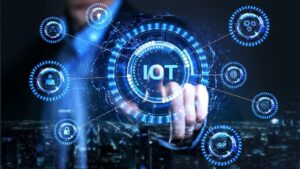
Let’s explore a practical example of how IoT integrates into daily life:
Imagine a smart home ecosystem:
- When you wake up, your smart thermostat adjusts the temperature to a comfortable setting.
- Your IoT-enabled coffee maker brews your coffee automatically based on your morning routine.
- On your way to work, your connected car suggests an alternate route to avoid traffic congestion.
- While at work, your security cameras and smart locks ensure your home remains safe.
This level of automation not only saves time but also enhances convenience and safety.
Read More Related: Types of Actuators in IoT and Their Impact on Real-World Systems
Challenges and Limitations of IoT
While IoT offers immense benefits, it also faces challenges:
- Data Security and Privacy: As IoT devices collect vast amounts of sensitive data, ensuring its protection from breaches is critical.
- Interoperability: With a diverse range of devices and manufacturers, achieving seamless communication between devices can be complex.
- Scalability: Managing and processing data from billions of connected devices requires robust infrastructure.
- Energy Consumption: IoT devices often require power sources, raising concerns about sustainability and battery life.
The Future of IoT: What Lies Ahead
The future of IoT is promising, with advancements in areas like:
- Artificial Intelligence: AI will make IoT systems smarter, enabling predictive analytics and decision-making without human input.
- 5G and Beyond: Faster and more reliable networks will support large-scale IoT ecosystems, such as smart cities and connected industries.
- Edge Computing: By processing data closer to its source, edge computing will reduce latency and enhance real-time decision-making.
- Sustainability: IoT will play a crucial role in addressing environmental challenges through smart grids, efficient resource management, and renewable energy integration.
Final Thoughts: The Road Ahead for IoT
The IoT revolution is only beginning. As technology evolves, it is poised to transform industries, improve lives, and tackle global challenges like sustainability. With significant investments and technological advancements, the future of IoT is bright, offering unparalleled opportunities for innovation and growth.
Read More Related: Transforming Manufacturing with IoT: Key Benefits & Insights
FAQs
1. What is IoT, and why is it important?
IoT is a network of connected devices that communicate and exchange data autonomously. It’s crucial for improving efficiency, enabling automation, and driving innovation in industries.
2. How many IoT devices are expected by 2030?
The number of IoT-connected devices is projected to surpass 50 billion by 2030, highlighting the growing demand for connectivity across sectors.
3. What are the key industries leveraging IoT?
IoT is transforming industries such as healthcare, manufacturing, transportation, energy, and smart homes, offering solutions to improve efficiency and reduce costs.
4. How does IoT contribute to sustainability?
IoT enables businesses to monitor energy consumption, reduce waste, and optimize logistics, helping them meet sustainability and environmental goals.
5. What role does 5G play in IoT’s future?
5G networks enhance IoT by enabling real-time data transfer, low latency, and high-speed connectivity, essential for applications like smart cities and autonomous vehicles.
